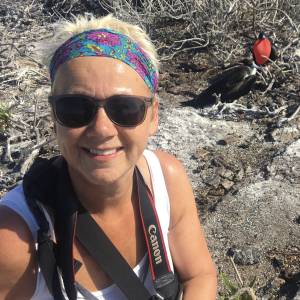Piran
Today we head for the coast - well the tiny 29 mile stretch of coastline that Slovenia has! The weather has improved marginally; we’re now on ‘drizzle’ so there’s some hope of a decent drive, and the forecast suggests the coast is likely to be brighter.
We pick up our car from the train station, and G drives the 122 km to Piran - a delightful Italianate walled town on its own little peninsula. The skies are grey, and low clouds provide atmospheric mist as we drive over thickly forested hills and past wooden farm buildings in the rural landscape. To the west, the skies are brightening and we’re optimistic that our seaside sojourn will be blessed by better weather.
When we arrive, however, parking our car high up on the hill just outside the old town walls, the brightness in the sky remains tantalisingly out at sea. Here in Piran it’s overcast and damp, with a very brisk wind blowing off the sea. We look down on the little town, unmistakably Venetian, bearing witness to half a millennium under that great city’s rule. To the east, G’s sure he can make out the silhouettes of Venice - I’m saying nothing - and to the north, unmistakably snow-covered alpine peaks catch the sun.
We wander down the steeply winding street towards the harbour where fishing boats lie huddled together, many sporting arrays of black flags from their masts, flapping ominously in the wind. I later discover these are flags hoisted in protest against Croatian fisherman contesting what the coastal Slovenians see as theirs.
Continuing with the theme of flags, the town hall boasts four flying from its grand balcony - the flags of Piran, Slovenia, Italy and the EU. This is an area where national loyalties are divided, and you’re just as likely to hear Italian spoken as Slovenian. So much of central Europe has been used like chess pieces in a giant game, moved back and forth with time, bargaining chips to get the ‘best’ results for those wielding the power.
Our experience of these ancient sea towns tends to have been limited to summers where their narrow winding streets and tall shuttered buildings have offered welcome shade from burning sun. Now they offer shelter from the biting winds - though those opening onto the sea become wind tunnels rather than shelters.
Out of season, much is closed and near-deserted, though a number of brave souls like ourselves wander the streets and find shelter in the warmth of cafes still serving through the winter - in our case sitting outside wrapped in rugs and warmed by the ubiquitous heaters.
At the far end of the promenade defended now by piles of boulders, the tip of the peninsula bears the brunt of winter storms - waves crash, sending huge fountains of spray into the air. And further along where seas are calmer, Piran’s own mermaid statue sits, gazing serenely against that tantalisingly breaking sky.
Back in the centre G has discovered that the great violinist Tartini (1692 1770) was born here. He stands flamboyant with his fiddle high above the square (Tartini, that is, not G) and G has to have his photo taken with the master. Sadly, his house and museum are not open.
And so we wind our way back up along Piran’s ancient walls, back to the car and return to Ljubljana, impending darkness limiting any other visits for today.
Tonight we dine outside at the modest but delicious Pop’s Burgers in the middle of the Old Town - a far cry from yesterday’s Michelin experience!
Thank you for your kind response to yesterday’s ‘Architecture and Gastronomy’ blip. I have been trying to keep up with responses and journals, but I suspect there will be little commenting now until we get home I’m afraid.
Today’s main is a wave breaking over the peninsula against the darkness of the storm clouds to the north, with an extra of the mermaid sculpture looking out to the brighter west, and a collage of extras to give a taste of Piran.

Comments
Sign in or get an account to comment.


